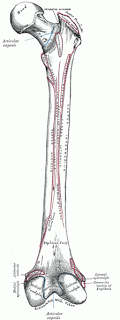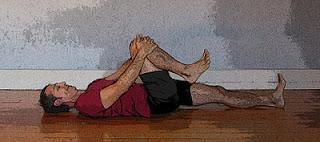I received an email just the other day from a colleague in Colorado who was about to meet with a new private yoga client and was looking for some guidance. The woman coming in had apparently been diagnosed with hip dysplasia around the time of delivering a baby. Even without any more information than that, I could guess that the affected hip is the left one, as statistics for this unique hip condition bear that out. And it is eight times more likely to show up in women than men.
Usually, this is a condition that is diagnosed around the time of birth in babies. When I was involved in my family practice, I’d go in the morning after a baby was delivered to our practice and one of the routine examination techniques was to check the hips of the newborn for a clunking shift in one or both hips when performing a certain movement of the femur bones. From there, if the test was positive, follow up ultrasound or X-rays was done to confirm the diagnosis. The screening done around birth, however, is not perfect, especially when the hip changes are small and that is why the student in question was not diagnosed until adulthood.

Femur Bone
The term “dysplasia” refers to abnormal development of the place where the femur bone (thigh bone) meets the pelvis bone. It can be either the head of the femur bone or, more commonly, the acetabulum (the rounded, concave receptive part of the pelvic bone) that does not develop normally. This abnormal development leads to an increased chance for the hip joint to mildly or more dramatically shift or even dislocate. This can lead in turn to abnormal walking, limping, shifts in the pelvic alignment and other undesirable changes, including pain. When caught in infancy, there are treatments that can help stabilize or treat the condition to increase the chances of more normal development of the joint as the child ages. Untreated milder forms of hip dysplasia can lead to early development of arthritis in the hip joint. And the opposite hip, if unaffected initially, can start to have it’s own problems as it has to pick up the slack for the misaligned dysplastic joint.According to one source, all treatment aims to delay the onset of arthritis, but no treatment is fully successful in avoiding it. But despite this seemingly dire prediction, it is worth working via yoga or physical therapy to preserve or improve function of the hip. I’d always recommend checking in with the student’s orthopedic doctor and/or their physical therapist to get a sense of the degree of change in the joint, and any precautions they recommend. Since subluxation (shifting of the bones out of normal alignment) and dislocation are possibilities, using caution when doing deeper internal and external rotation, and deep forward bending of the joint would be wise. The approach I’d take would be to work on strengthening and stabilizing the hip area via both weight-bearing standing poses (such as Mountain Pose, Triangle pose, Warrior 1 and 2 poses, and Extended Side Angle pose, with appropriate modifications and/or propping) and non-weight-bearing poses (such as Reclined Leg Stretch and our Dynamic Reclined Hip Stretches).

Dynamic Reclined Hip Stretch Position 2
If there is already some arthritis and pain, I’d treat this situation like any arthritis condition, recommending initially practicing more non-weight-bearing asana variations, including reclining on the floor or using a chair for the standing poses, and progressing to weight-bearing if pain has diminished and strength is improving. Also, remember that preserving range of motion of the joint is important, so taking the joint through all of it’s movement possibilities, keeping the above cautions in mind, will also help keep the joint healthier over time. I will be curious to see how things progress with my colleague’s work. Maybe we’ll get a report back down the road that I can share with you!
